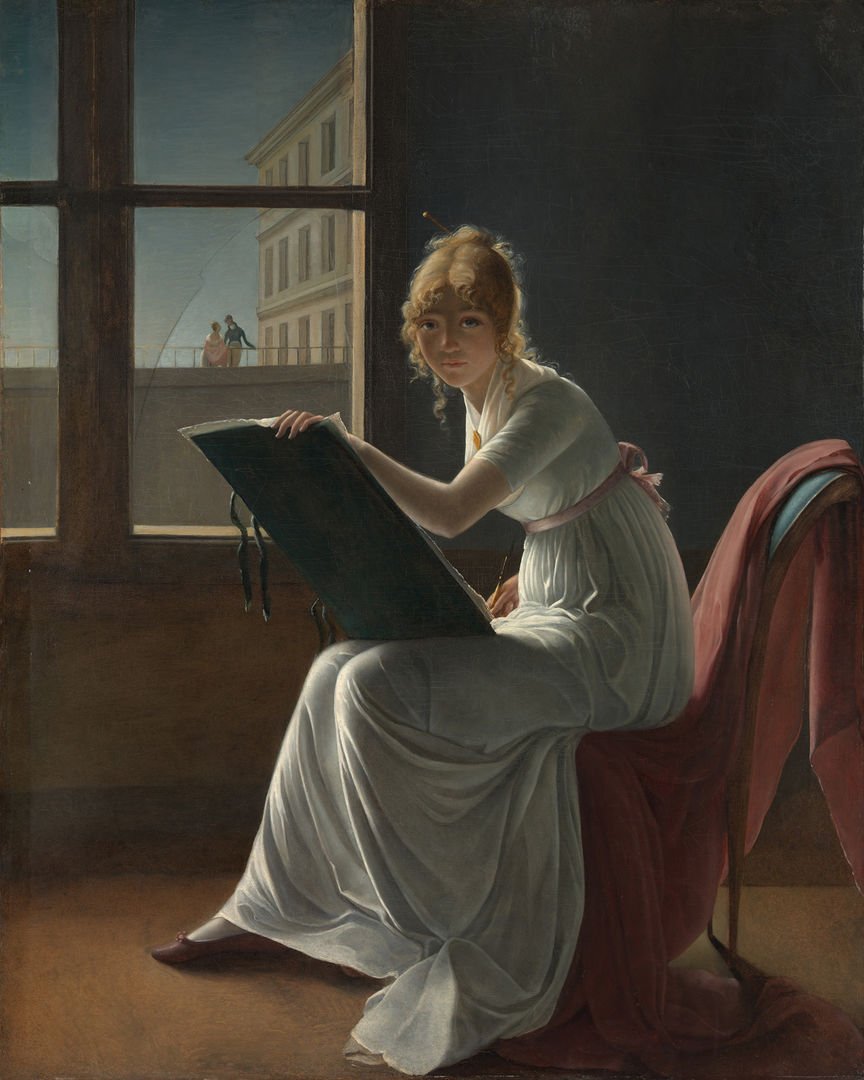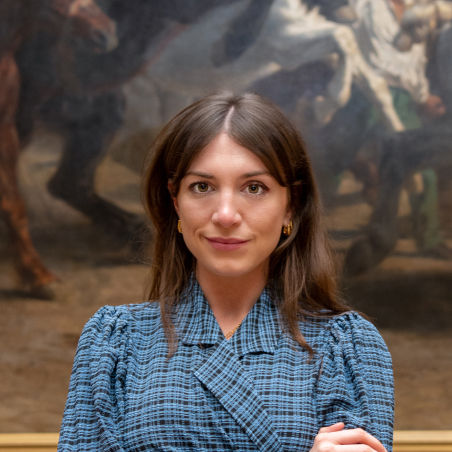In 1917, The Met purchased this portrait of a young woman artist for $200,000.
At the time, it was thought to be painted by the male Neoclassical artist, Jacques-Louis David. Art historian Kathryn Calley Galitz shares how the scholar Margaret Oppenheimer made a surprising discovery when she reevaluated that attribution more than half a century later.
Listen to the conversation, or read the full transcript below.
Transcript
KATY HESSEL: In 1917, for $200,000, The Met bought this portrait of a mysterious young woman artist sketching at her easel. Dappled in dramatic sunlight, she’s looking right at the audience.

Marie Denise Villers (French, 1774–1821). Marie Joséphine Charlotte du Val d’Ognes (1786–1868), 1801. Oil on canvas, 63 1/2 x 50 5/8 in. (161.3 x 128.6 cm). The Metropolitan Museum of Art, New York, Mr. and Mrs. Isaac D. Fletcher Collection, Bequest of Isaac D. Fletcher, 1917 (17.120.204)
KATHRYN CALLEY GALITZ: There’s this directness to her gaze, and she’s really drawing you in and acknowledging you.
HESSEL: Art historian, Kathy Galitz.
GALITZ: The painting was made in 1801… and by the time the Museum acquired this work in 1917, it was attributed to the leading male neoclassical painter of the day, Jacques-Louis David.
HESSEL: And when the work was acquired by The Met, it instantly became a popular attraction. It was promoted as “the New York David.”
GALITZ: David was very much in the air.
HESSEL: But here’s the thing—the painting wasn’t by Jacques-Louis David.
GALITZ: In 1996, a woman art historian named Margaret Oppenheimer identified the author of this painting. And her name is Marie Denise Villers.
HESSEL: This incredible painting was crafted by a female artist who studied with David’s contemporaries. This kind of misattribution isn’t uncommon.
GALITZ: Other museums across the United States have ex-Davids that it turns out, by and large, many of them had been painted by a woman.
And at the time, that is in the late eighteenth and early nineteenth century, these women artists were known and recognized. And this to me, this blew my mind to read this, women had more prominence in Europe in that period than they do in European and American museums today.
HESSEL: In the aftermath of the French Revolution, a time of great social progress, women artists had more opportunities to exhibit their work: the annual Paris Salon opened up to all artists, including women, in 1791.
GALITZ: It was only with the passage of time that their identities became lost.
The past few decades have shown in various ways a kind of questioning of the canon of art history and not accepting the status quo. And part of it was that many women art historians didn’t accept necessarily that all of these works were by David or were by his male students. And that why couldn’t they have been painted by women who we know studied with David and who we know exhibited and were active at that time? Where are these paintings, then? They were there a hundred, two hundred years ago, so where are they now? And then making these discoveries that, in fact, they’re literally right in the midst of our museums and in our galleries if we do a little digging, and do a little looking.
And what’s also interesting and I think maybe a subtle bit of subversiveness, if you will, is that a lot of women artists painted either self-portraits of themselves at work or portraits of other artists at work. And in the case of the Museum’s painting, it is thought that this is a portrait of a young art student called Charlotte Val d’Ognes. But that these women were showing themselves as artists or other women as artists, it’s almost as if to say, “Hey, you know, we’re here, and you have to take notice.” And it’s just a statement-making work in that way.
HESSEL: Listen on to hear more incredible stories about women artists at The Met.
###
This audio tour is one in a series of tours called Museums Without Men produced by Katy Hessel in collaboration with institutions across the globe, such as the Fine Arts Museum San Francisco, the Hepworth Wakefield, the Hirshhorn Museum and Sculpture Garden, and Tate Britain. The series encourages museum visitors to seek out work by great women and gender non-conforming artists in these institutions who, simply by virtue of their gender, were often overlooked and underrepresented.





















